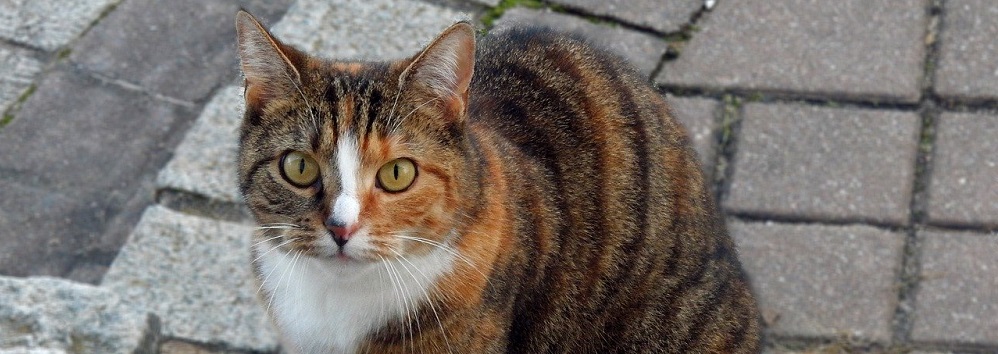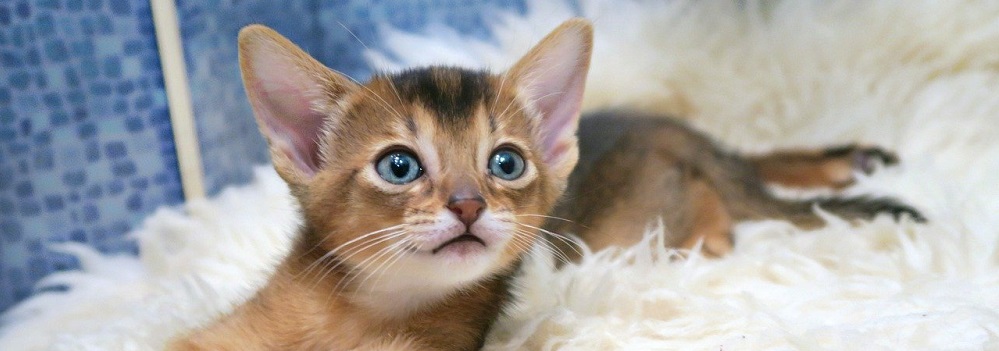Cats scratch and clean themselves all the time. You, as a normally distracted human being, probably don’t pay any more attention to their occasional itches than to their hairballs. But if you notice your animal companion is frequently scratching or continually grooming (in a neurotic, you’re-doing-this-too-much kind of way), it may be a sign that there’s a cat skin problem.
Just like people, cats can have sensitive skin. As you already know, your feline pal is adept at hiding his or her pain, so it’s important to know the signs of common cat skin issues. This guide is designed to help you recognize common cat skin issues and understand the possible causes of a cat skin problem.
Signs of Irritated Skin
When human skin is irritated, you know the signs-dry flaky skin, scaly patches, red rashes, raised bumps, and itchy skin. You also probably know the skin irritation solutions, from lotions to topical balms to oral medications. Even though your kitty is covered in fur, they can be just as susceptible to skin irritation, and they may present in similar ways.
When it comes to cats, signs of a skin issue may include:
- Scratching
- Obsessive grooming, including bald patch
- Biting their own skin
- Red patches on the skin
- Shaking their heads (which may indicate an ear issue)
In order to keep track of your cat’s skin condition, be sure to brush their fur regularly, getting your eyes on areas that might usually hide under hair. Brushing also helps to distribute your cat’s natural skin oil, protecting against irritants that may cause dermatitis.

Understanding Irritants
So you’ve been brushing your cat regularly, and you’ve noticed some cat skin problems. Next, let’s take a look at the common causes of red spots, overgrooming, and scratching.
FLEAS AND MITES
Mites and fleas are both small parasites that can affect cats and dogs. Even if your cat never goes outside, it’s possible they’re still at risk for fleas and mites (another pet can bring them into the house, as can any mice who may frequent your home).
Fleas love to prey on any and all warm-blooded mammals and hop a ride however they can. Mites, meanwhile, are microscope parasites that mostly affect the ears. Ear Mites are most common in kittens, but they can affect cats of any age.
Symptoms of mites and fleas include:
- Itching and scratching
- Dry, red, or irritated patches
- Dandruff
- In the case of ear mites, black or reddish discharge from the ears
Luckily, fleas and mites can be easily treated with topical medication or medicated shampoo. Consult your veterinarian for help if your cat has these cat skin problems symptoms.
ENVIRONMENTAL ALLERGENS
We all have that friend with a gluten food allergy or a sensitivity to polyester. In some cases, it’s your furry friend allergic to things in their environment. Just like humans, cats come into contact with hundreds of substances each day, and they may have an allergic reaction to anything from pollen to their food. Other allergens may include:
- Organic substances, including grass, mold, etc.
- Cleaning products
- Cat litter
- Perfumes and other scented sprays
- Medication
- Grooming products
If your cat has GI distress in addition to their skin conditions, an environmental allergen may be to blame. In addition, any unexplained rashes, skin lesions, or bumps could have skin allergies as the root cause. Start by identifying if your cat has seasonal skin issues, or if there is a more serious cause before treating the problem.

FELINE ACNE
Teenagers aren’t the only mammals at risk for acne. Your furry friend can develop pimples, too. Make sure not to get confused between feline acne vs flea dirt. If your cat has small, pimple-like bumps around their chin, they may be suffering from cat acne.
Feline acne doesn’t always cause your cat pain or discomfort. In some cases, the blackheads don’t bother the cat at all. Luckily, treating cat acne can be easy if you discover the root of the cause.
However, cat acne can sometimes be traced to environmental allergies, including allergies to plastic bowls or reactions to the bacteria that build up on them. If your cat usually eats from a plastic bowl, try switching to a ceramic or metal bowl, and if that doesn’t do the trick, consult with your vet to rule out other allergies.
Check with your vet to find an appropriate course of treatment if your cat’s acne is causing them any discomfort or distress.
DRY SKIN
Acne isn’t the only skin ailment you may share with your cat: just like humans, cats can develop dry, flaky skin in the winter. Cats most commonly develop dandruff and dermatitis on their backs near their tails, and sometimes, their fur seems oily, too.
If your cat isn’t itchy and still has a healthy, shiny coat, dandruff may be nothing to worry about. However, it can also be tied to underlying issues (including allergies and parasites), so it’s worth checking out.
HAIR LOSS
Cats can develop bald spots or shed excessively for a variety of reasons. These include:
- Stress
- Improper diet/nutrition
- Allergies
- Fleas
While your cat may not seem bothered by their hair loss, it can be a sign of a deeper skin problem at play, so it’s always important to pay attention.

Treating Your Cat
As you can see from the above list, it’s often difficult to tie a cat’s skin condition to the direct cause. As you know, your cat may be good at hiding its discomfort, so be sure to keep a lookout for any skin conditions. Once you notice one, observe whether your cat is constantly scratching, biting, or grooming himself so you can share the appropriate information with your vet.
With many common cat skin issues, it’s simply a matter of soothing your pet’s rash or immediate symptoms. At Vetericyn, we recommend Trying a topical treatment or medicated pet shampoo, and be sure to consult with a professional to make sure you nip any bigger issues in the bud.
 Reviewed by Dan Richardson, Veterinarian
Reviewed by Dan Richardson, Veterinarian
Dan Richardson has been a practicing veterinarian for over 10 years. He specializes in surgery and orthopedics. Dan is originally from rural western Nevada and attended the University of Idaho for undergraduate study and Oregon State University for Veterinary School. The Richardson Family enjoys camping and spending time on the water fishing, paddle boarding, or digging their feet in the sand somewhere warm.
Sources:
- Cat Behavior Associates. Benefits of grooming your cat. https://www.catbehaviorassociates.com/health-benefits-of-grooming-your-cat/
- Purina. Cat skin Issues. https://www.purina.co.uk/cats/health-and-nutrition/symptoms-to-watch-out-for/cat-skin-problems